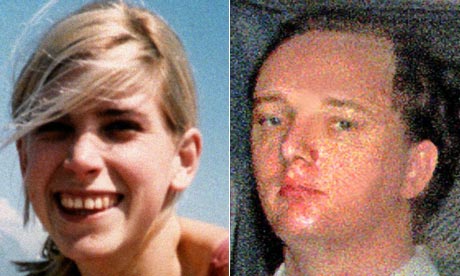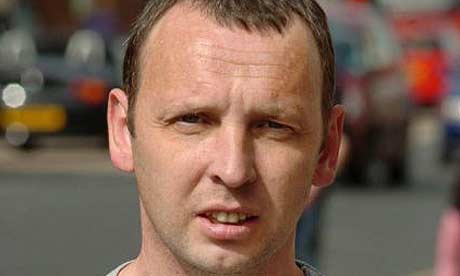Police failures left a serial rapist free to commit one of Britain's most notorious murders and cost the lives of another young mother and her child, one of the country's most senior officers admitted yesterday.
Further errors uncovered at the Forensic Science Service in the wake of a DNA breakthrough in the case of Rachel Nickell may have left murderers, rapists and other serious criminals at large in at least 15 other cases.
Police forces across the country are now belatedly pursuing the cases after the FSS identified DNA of suspects where previously it was thought there was none.
Sixteen years after the murder of Nickell, 23, on Wimbledon Common, John Yates, assistant commissioner of the Metropolitan police, publicly expressed regret yesterday that officers in three major inquiries had missed a series of opportunities to catch Robert Napper, a paranoid schizophrenic and multiple rapist.
Had they pursued the opportunities they could have prevented the death of Nickell, a former model from south-west London, and 16 months later the killing and mutilation of Samantha Bissett, 27, and the suffocation of her four-year-old child, Jazmine.
"More could and should have been done," said Yates. "Had more been done, we would have been in a position to have prevented [the Nickell killing] and other attacks by Napper. I particularly refer to the dreadful murders of Samantha and Jazmine Bissett in November 1993."
As Nickell's killer pleaded guilty at the Old Bailey yesterday, Colin Stagg, who was wrongly accused of being the Wimbledon murderer, finally received an unprecedented apology from the police.
"It is clear that he is completely innocent of any involvement in that case," Yates said.
"I apologise to him for the mistakes that were made in the early 1990s and we also recognise the huge impact that this has had on his life."
Nickell's killing in July 1992 became one of the longest and most controversial unsolved homicide inquiries, costing an estimated £3m. Nickell was walking with her two-year-old son Alex on Wimbledon Common when she was forced to her knees at knifepoint by Napper and stabbed 49 times in a frenzied attack which almost decapitated her. Alex was dragged face down along the ground to stop him going to his mother, the Old Bailey was told yesterday.
After a controversial undercover operation using a glamorous police woman to befriend Stagg, he was charged with murder and spent 13 months in prison before a judge threw out the case against him.
Monica and Andrew Nickell, Rachel's parents, and her former partner, Andre Hanscombe, who moved to southern Europe with their son to escape media intrusion, were at the Old Bailey yesterday to see Napper finally admit the killing.
All three have received apologies from the police for the significant failures in police operations which left Napper free to kill Nickell.
Napper, who has been held in Broadmoor high-security hospital since 1995 for the murders of the Bissetts and three sexual attacks, appeared in the court with his hands clasped behind his back. To the question how do you plead, he replied: "Not guilty to murder, guilty to diminished responsibility manslaughter." He made no further comment.
The court heard that Napper was responsible for a series of rapes in south-east London, which became known as the Green Chain Rapes and began in 1989.
He admitted one rape and two attempted rapes, but refused to admit any crime in which there was no forensic evidence. Police believe he could have been responsible for another 83 sexual assaults.
The failure to apprehend him for these attacks - in the face of a large amount of evidence - enhanced the danger he posed to the public by the time he attacked Nickell, the court heard yesterday. Left at large, he began to feel "powerful, untouchable, reckless", and when on 15 July 1992 he left his flat carrying a knife to go in search of a woman for sex, he was at his most aggressive.
Napper marked out his attacks on an A-Z street map found in his flat, moving from south-east London to Wimbledon to escape police attention. Police discovered the map three months after Nickell was killed. It contained a black mark on Richmond Park, which is less than two miles from Wimbledon Common, where she was attacked.
After years of police mistakes, Napper was apprehended after a forensic breakthrough by a private laboratory, LGC, which succeeded where the FSS failed. Scientists at LGC spent three years refining a sample from Nickell's body and produced a DNA profile. There was a one in 1.4m chance the sample did not come from Napper.
Since the discovery, the FSS, which is used by police nationally, has re-examined hundreds of samples and identified the DNA of suspects in 15 serious crimes, including rape, murder and assaults.
LGC went on to re-examine evidence which had been available to the first inquiry team - a footprint in the mud which matched one of Napper's trainers and red paint flakes, found in the hair of Nickell's son, which came from his toolbox.
Mr Justice Griffiths Williams told Napper he would be held in Broadmoor high security hospital, Berkshire, indefinitely, adding: "You are a very dangerous man."







